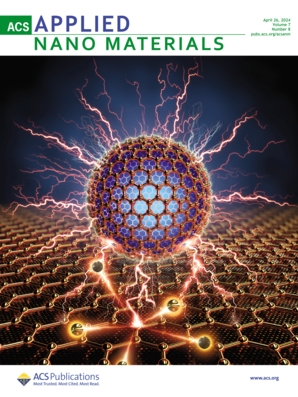用于高分辨率触觉传感的嵌入式光纤形传感阵列人工指尖。
IF 5.3
2区 材料科学
Q2 MATERIALS SCIENCE, MULTIDISCIPLINARY
引用次数: 0
摘要
复制人类的触觉对机器人或假肢非常有利,因为这将使机器人或假肢与环境进行敏捷灵巧的互动。文章介绍了一种将微型机电系统传感皮肤与 144 个触觉传感器集成到柔软的人体大小人造指尖上的方法。传感技术包括包裹在柔软弯曲指尖上的薄型一维传感条。传感条包括直径 0.5 毫米的电容式传感器,以 1 传感器/平方毫米的分辨率测量触摸、振动和应变。与其他触觉传感技术相比,该方法充分利用了传感表皮的优势,同时展示了在柔软的三维物体上集成此类表皮的解决方案。可适应的传感特性主要取决于喷涂硅胶层的厚度,将传感器封装在坚固的材料中。我们对封装后厚度达 600 μm 的类肤体的静态和动态传感能力进行了鉴定。皮层厚度为 600 μm 的类人猿的灵敏度为 6 fF/mN,如果与所开发的电子元件相结合,其灵敏度相当于人类手指的 5 倍。它们可以检测 0-600 Hz 全部测试范围内的振动。我们测量了人类手指的柔软度,以制造出与之相似的人工感应手指。微型读出电子装置可以以 220 Hz 的频率读出整个手指,从而观察人造手指上的触摸和滑动事件,并估算接触力。滑动事件可以通过单个传感器记录的振动来观察,而接触力则可以通过传感器阵列读数的平均值来提取。我们通过测试芯片上的单个涂层传感器以及完全集成的传感指尖,施加 15 N 的压力 10,000 次,验证了传感技术的坚固性。定性数据集显示了指尖对触摸各种物体的反应。本文的重点是传感硬件的开发和传感性能的基本表征。本文章由计算机程序翻译,如有差异,请以英文原文为准。
Artificial Fingertip with Embedded Fiber-Shaped Sensing Arrays for High Resolution Tactile Sensing.
Replication of the human sense of touch would be highly advantageous for robots or prostheses as it would allow an agile and dexterous interaction with the environment. The article presents an approach for the integration of a micro-electromechanical system sensing skin with 144 tactile sensors on a soft, human-sized artificial fingertip. The sensing technology consists of thin, 1D sensing strips which are wrapped around the soft and curved fingertip. The sensing strips include 0.5 mm diameter capacitive sensors which measure touch, vibrations, and strain at a resolution of 1 sensor/mm2. The method allows to leverage the advantages of sensing skins over other tactile sensing technologies while showing a solution to integrate such skins on a soft three-dimensional body. The adaptable sensing characteristics are dominated by the thickness of a spray coated silicone layer, encapsulating the sensors in a sturdy material. We characterized the static and dynamic sensing capabilities of the encapsulated taxels up to skin thicknesses of 600 μm. Taxels with 600 μm skin layers have a sensitivity of 6 fF/mN, corresponding to an ∼5 times higher sensitivity than a human finger if combined with the developed electronics. They can detect vibrations in the full tested range of 0-600 Hz. The softness of a human finger was measured to build an artificial sensing finger of similar conformity. Miniaturized readout electronics allow the readout of the full finger with 220 Hz, which enables the observation of touch and slipping events on the artificial finger, as well as the estimation of the contact force. Slipping events can be observed as vibrations registered by single sensors, whereas the contact force can be extracted by averaging sensor array readouts. We verified the sturdiness of the sensing technology by testing single coated sensors on a chip, as well as the completely integrated sensing fingertip by applying 15 N for 10,000 times. Qualitative datasets show the response of the fingertip to the touch of various objects. The focus of this article is the development of the sensing hardware and the basic characterization of the sensing performance.
求助全文
通过发布文献求助,成功后即可免费获取论文全文。
去求助
来源期刊

ACS Applied Nano Materials
Multiple-
CiteScore
8.30
自引率
3.40%
发文量
1601
期刊介绍:
ACS Applied Nano Materials is an interdisciplinary journal publishing original research covering all aspects of engineering, chemistry, physics and biology relevant to applications of nanomaterials. The journal is devoted to reports of new and original experimental and theoretical research of an applied nature that integrate knowledge in the areas of materials, engineering, physics, bioscience, and chemistry into important applications of nanomaterials.
 求助内容:
求助内容: 应助结果提醒方式:
应助结果提醒方式:


